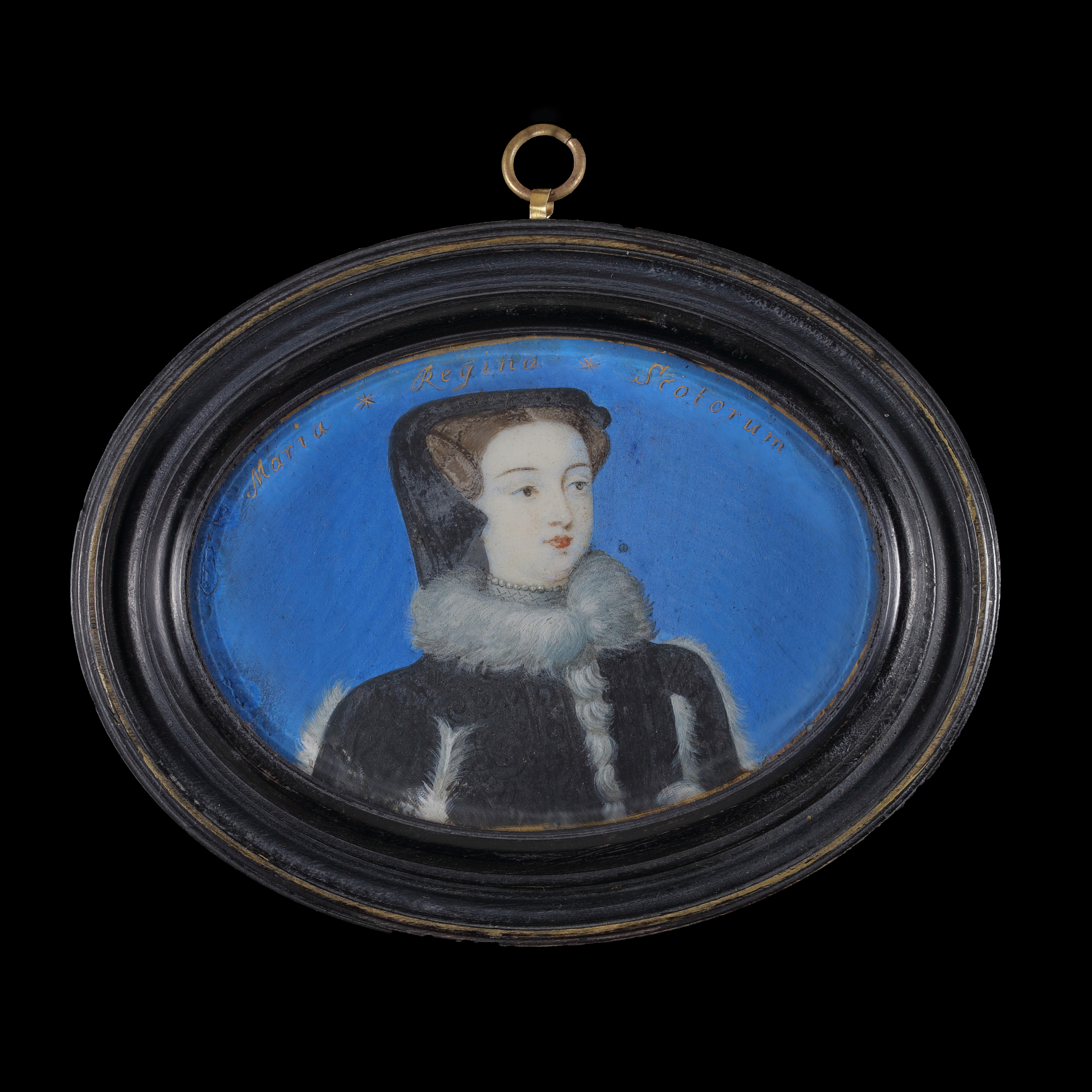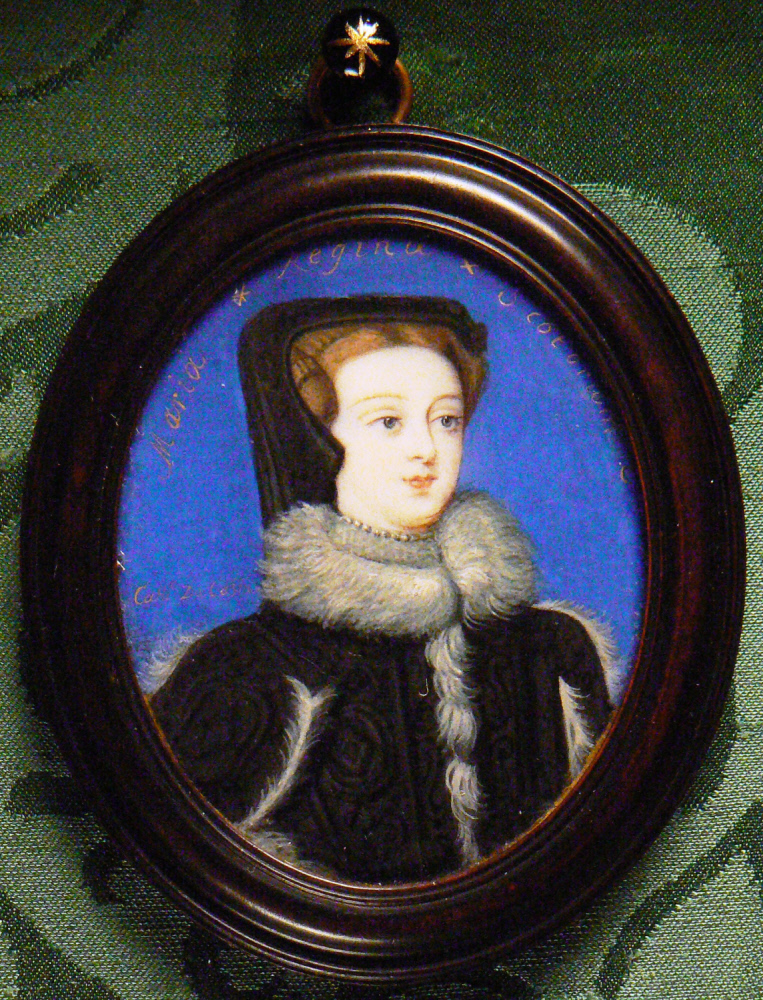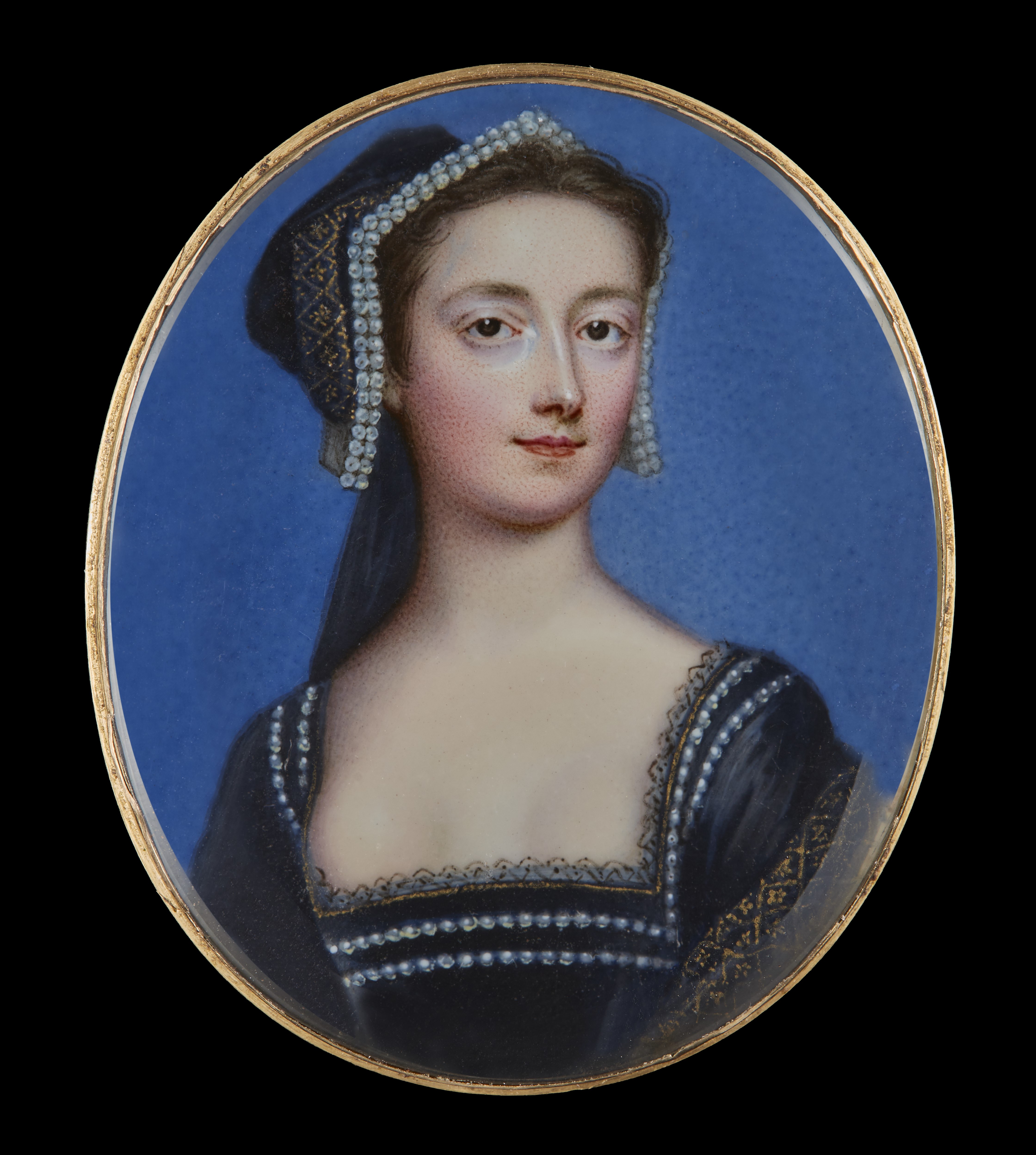By Phoebe Griffiths, guest blogger |
13 Mar 2025
Something About Mary: The Popular Image of Mary Queen of Scots in the 18th Century

Fig. 1 BERNARD LENS III (1682-1740), Portrait miniature of a Lady called Mary Queen of Scots (1542-1587), wearing a black coat with white fur trim; circa 1720 – for sale with The Limner Company
As the new century began, technological advancement boomed and the print trade rapidly grew. At the same time, an interest in history and antiquarianism was flourishing, prompting a democratisation of access to print collecting. In particular, a trend of producing and possessing engraved historical 'heads' emerged, alongside portrait miniature heads like Fig. 1. In 1717 the newly established Society of Antiquaries employed George Vertue to engrave and print historical portraits. Alongside Vertue, other printmakers, artists and historians began making serious attempts to find genuine reproductions of historical figures like Mary, although they often misdated paintings and dress and identified many portraits in error. Regardless, there was an enormous commercialisation of effigies of royals in miniatures and reproduced engravings, laying the foundations for miniaturists to become part of an industry of historic copyists.
As a steeped historical figure, Mary Queen of Scots was a natural subject for these painters and maintained a large foothold in the market thanks to her cult following. Examples of miniatures like Fig. 1 are highly prevalent, largely thanks to an artist named Bernard Lens III (1682-1740), who ran a thriving business selling copies of historic miniatures. This fashion originated with Charles I, who had a large number of his paintings copied in miniature and would take them on his travels. Lens was a successful miniaturist and copyist and this Mary, inscribed 'Mary Regina Scotorum' in gold, is his most often encountered copy, with Fig. 2 another example of this copy. Lens was also a drawing master and his pupils included the three children of King George II, as well as the famous art collector Henry Walpole. He is credited with introducing the painting of miniatures on ivory as opposed to vellum to Britain. However, Lens' prosperous career also included the production and distribution of historic portrait miniatures. Lens had a keen interest in history, collecting and studying older miniatures such as that of Samuel Cooper and providing services relating to the restoration and reframing of paintings. He is well-known for his 'cabinet miniatures' for aristocratic clients, as it was fashionable for buyers to request copies of their own art collections. As a result, Lens was especially famed for miniature copies of old masters. The majority of this work was commission-based, whereas Lens most likely produced these Mary miniatures for the public market, knowing her popularity and fame. In fact, he may well have influenced his pupil, Catherine da Costa (1679-1756), an esteemed miniaturist in her own right, to produce this extremely similar portrait miniature of Mary (Fig. 3).
 Fig. 3, CATHERINE DA COSTA, Imaginary Portrait of Mary Queen of Scots (1542-1587); circa 1720 - Ham House Surrey, National Trust
Fig. 3, CATHERINE DA COSTA, Imaginary Portrait of Mary Queen of Scots (1542-1587); circa 1720 - Ham House Surrey, National TrustLens' speculative business venture expanded beyond productions of Mary though and he painted a whole series of 'heads' of English Kings and Queens (and the Lord Protector Oliver Cromwell) on vellum throughout the 1730s (such as Fig. 4). This painted series are more roughly and rapidly painted than his cabinet miniature works, and most likely appealed to an audience of collectors desiring more expensive versions of the engraved 'heads'. Again, the series is characterised by the distinctly 16th-century solid bright blue background. This portrait style was so contemporaneously fashionable that Lens even depicted his sitter clients in the same Stuart style. For example, Lens' portraits of Richard Whitmore MP and his family have the same background (Fig. 5).

Fig. 6, CHRISTIAN FRIEDRICH ZINCKE (c. 1683-1767), Portrait of Elizabeth Montagu (1718-1800) in black, lace-edged costume, the dress and gold-figured coif with pearls; c. 1740-1745 - Private Collection, UK
Out of all the 16th century royals, Mary's fame and look also influenced Lens' other clients. Whilst painting a picture of a lady wearing the same style of dress to Mary, the lady reportedly told Lens 'But Mr. Lens, you have not made me like Mary Queen of Scots.' ‘No, madam,’ he replied. ‘If God Almighty had made your ladyship like her, I would.’ This not only illustrates the intrigue and widespread desire to be like Mary, but also Lens' reputation for commitment to painting true likenesses. It is therefore even more of a mishap that Lens' portrait miniatures of Mary actually follow a misguided image. Despite Lens' keen eye for the past and the proliferation of these snapshots of Mary, this particular iteration of the ill-fated queen was taken from a portrait once believed in good faith to have been a true likeness of the queen, but which actually has slightly murkier origins. The miniature belonged to the Duke of Hamilton who, as it was damaged, sent it to miniaturist Lawrence Crosse with the instruction to ‘make it as beautiful as he could'. Crosse obliged, unknowingly spurring the wide circulation of the popular yet inauthentically depicted queen. Lens was not alone in his penchant for painting Mary, nor his subjects. Fig. 6 is a portrait of Elizabeth Montagu by one of Lens’ contemporaries, Christian Friedrich Zincke (c. 1683-1767), with the sitter portrayed as Mary Queen of Scots. Montagu was a member of the Bluestocking Circle (c., an elite social and intellectual group, indicating the reach of Mary’s influence. Regardless of the real origins of the portrait, Mary’s look and legacy proliferated throughout portrait miniatures of the time, indicating the strength of her grip on the national imaginary.
This article was written by guest blogger and freelance researcher, Phoebe Griffiths.







